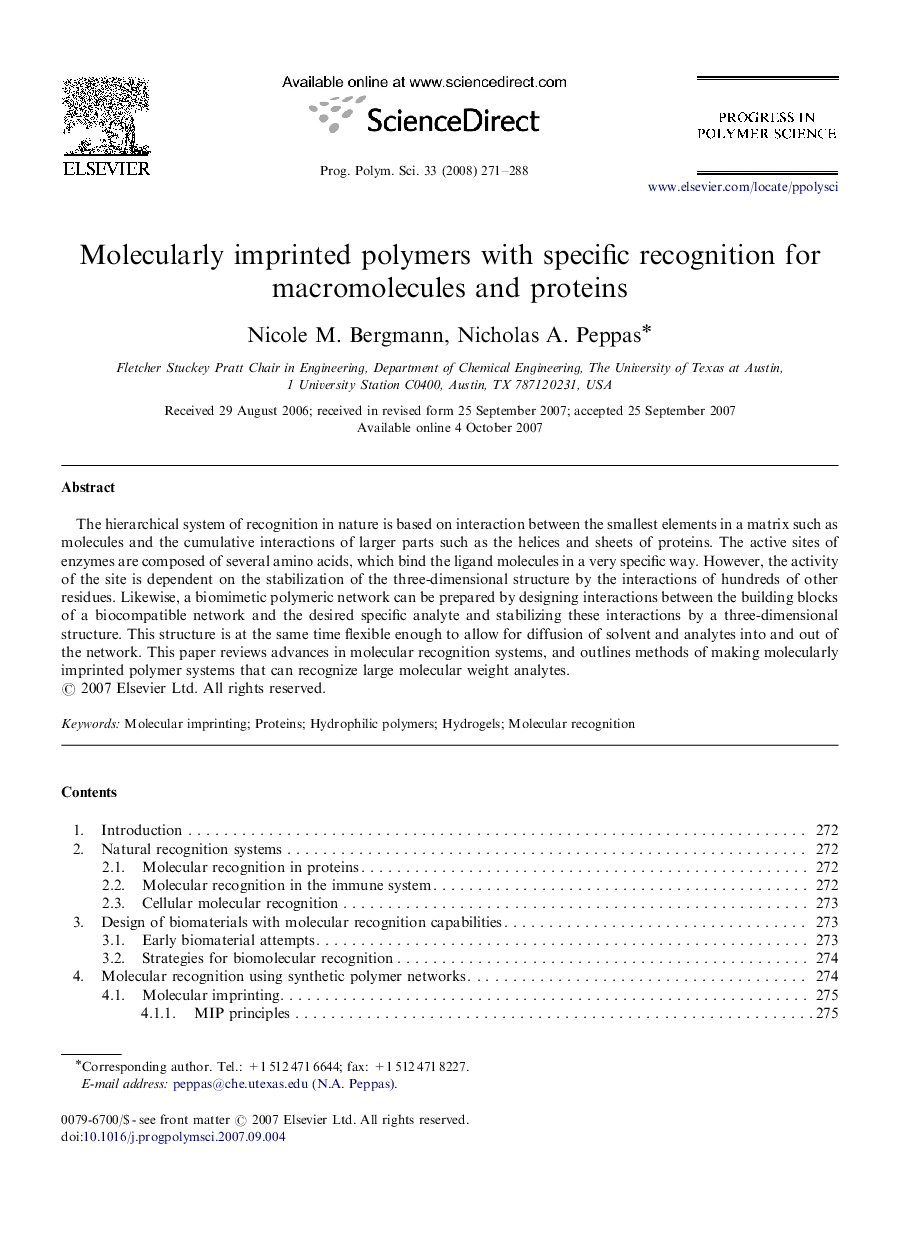| Article ID | Journal | Published Year | Pages | File Type |
|---|---|---|---|---|
| 5208745 | Progress in Polymer Science | 2008 | 18 Pages |
Abstract
The hierarchical system of recognition in nature is based on interaction between the smallest elements in a matrix such as molecules and the cumulative interactions of larger parts such as the helices and sheets of proteins. The active sites of enzymes are composed of several amino acids, which bind the ligand molecules in a very specific way. However, the activity of the site is dependent on the stabilization of the three-dimensional structure by the interactions of hundreds of other residues. Likewise, a biomimetic polymeric network can be prepared by designing interactions between the building blocks of a biocompatible network and the desired specific analyte and stabilizing these interactions by a three-dimensional structure. This structure is at the same time flexible enough to allow for diffusion of solvent and analytes into and out of the network. This paper reviews advances in molecular recognition systems, and outlines methods of making molecularly imprinted polymer systems that can recognize large molecular weight analytes.
Related Topics
Physical Sciences and Engineering
Chemistry
Organic Chemistry
Authors
Nicole M. Bergmann, Nicholas A. Peppas,
